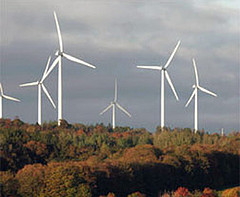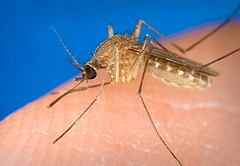Blood disease: No answer
www.tnonline.com/2012/sep/21/blood-disease-no-answer
Friday, September 21, 2012
By DONALD R. SERFASS dserfass@tnonline.com

DONALD R. SERFASS/TIMES NEWS A portion of the crowd at the Tamaqua Public Library on Thursday listens to an update on the status of a rare blood disease found in the local area in 2004.
A government agency provided a status update Thursday on research into a rare blood disease found in our area.
But the update left locals frustrated.
Joe Murphy, Hometown, voiced exasperation due to the slow pace of progress. Murphy represents the Citizens Advisory Committee and said he and his group would like to see improved flow of information and a more open approach.
“After six years, all I can say is where’s the beef,” said Murphy at the conclusion of an informal update provided by the Agency for Toxic Substances and Disease Registry (ATSDR).
The session drew over 50 concerned residents to the Tamaqua Public Library, where Lora Siegmann Werner and Dr. Elizabeth Irvin-Barnwell, both of the ATSDR, were on hand to respond to public questions. Also available were officials from the Pennsylvania Department of Health, the Department of Environmental Protection and several project partners.
The update included progress reports on 18 projects funded through $7.9M in government grants aimed at getting to the bottom of the cause of clusters of a disease that makes too many blood cells. The condition, polycythemia vera (PV), has been found at an alarming rate in Schuylkill, Carbon and Luzerne counties.
Among the new information provided by Irvin-Barnwell:
- 77 participants have been enrolled in an epidemiologic study through the University of Pittsburgh. The study compares the pattern of PV occurrences in the commonwealth.
- More accurate physician reporting of PV cases. This step is complete and the cases are undergoing internal quality control and data analysis.
- Physician education has been completed with regard to diagnosis, reporting and treating of PV cases.
- The Tri-County area case study is under way and 55 people with one of a number of slow-moving blood cancers have been recruited along with 473 people without the condition. Medical records are being examined for accuracy.
- A genetic study is under way with a review of blood samples from 39 volunteers to see if patients in the cluster area are genetically prone to develop PV. Gene profiling also is under way.
- Other studies under way include detection of a JAK2 mutation, recruitment for a tissue bank, and toxicology assay to evaluate whether 18 environmental contaminants can cause DNA damage.
- An air and water sampling plan has been finalized and samples are being collected. Air modeling is complete.
- Creation of a database for federal, state and other data relating to possible human exposures to contaminants from hazardous waste sites, industries, or businesses that release toxic substances has been completed. The data warehouse contains 100,000 samples and 2.5 million records for 2,700 substances.
- Environmental testing near the McAdoo Superfund site, three waste coal burning plants, and residential sampling have been collected and analyzed. The ATSDR is evaluating results.
- Murphy expressed concern that funding for the Citizens Advisory Committee was curtailed in January, 2010, and the ATSDR’s chief investigator, Dr. Vince Seaman, left for Nigeria in 2010 on a separate endeavor and is not due back until next year.

“Citizens have had a role in this … but we haven’t had a lot of money,” Joe Murphy, Hometown, addressing the public forum on polycythemia vera held at the Tamaqua Public Library. Funding for the citizens advisory group was cut in 2010.
Those setbacks, among others, have dealt a blow to local initiatives, said Murphy.
He is hoping the Betty Kester Alliance for a Healthy Future can step in to pick up the slack.
“Our goal is to continue to explore,” said Murphy.
“We’ll continue to have more of these updates,” says Dr. Irvin-Barnwell.
Kester and her husband, Lester, were Still Creek residents. Both developed PV. They are now deceased.
There have been 2,099 cases of PV reported in Pennsylvania. Of those, 227, or 10.8 percent, are found in Schuylkill, Carbon and Luzerne counties.
Marcellus Shale natural gas webinar series to start Sept. 13
live.psu.edu/story/61125#nw69
Friday, September 7, 2012

In the webinar a Penn State expert will present an analysis of shale-gas development, covering trends in rigs, production, pipelines and compliance.
UNIVERSITY PARK, Pa. — A new series of monthly, Web-based seminars covering issues related to Marcellus Shale natural-gas production will kick off Sept. 13.
Offered by Penn State’s College of Agricultural Sciences, the first webinar will focus on trends in shale-gas development and will include updates on the Marcellus gas play. Tom Murphy, extension educator and co-director of the Penn State Marcellus Center for Outreach and Research, will be the presenter, with extension educator Dave Messersmith moderating the Sept. 13 session.
Murphy will present an analysis of shale-gas development, covering trends in rigs, production, pipelines and compliance. This broad overview is aimed at providing a good foundation for understanding what the future may hold in the development of this energy source.
Presented by Penn State Extension’s Marcellus Education Team, all of the monthly webinars will be offered from 1 to 2 p.m. on Thursdays, with time for questions and answers. Planned topics include the following:
— Sept. 13: Overview and Analysis of Trends in Shale-Gas Development
— Oct. 18: Reading Royalty Checks
— Nov. 15: Natural Gas Utilization
— Dec. 20: What All the Water Studies Mean: Putting Them Into Perspective
— Jan. 17, 2013: Ethane Cracker Plant Impacts in a Community
— Feb. 21, 2013: Environmental Organizations’ Perspectives on Natural Gas Impacts on Forestry and Wildlife
Registration for the webinars is not necessary, and all are welcome to participate by logging in. For more information, contact Carol Loveland at 570-320-4429 or by email at cal24@psu.edu.
Previous webinars, publications and information also are available on the Penn State Extension natural-gas website,covering topics such as Act 13, seismic testing, air pollution from gas development, water use and quality, zoning, gas-leasing considerations for landowners, gas pipelines and right-of-way issues, legal issues surrounding gas development, and the impact of Marcellus gas development on forestland.
Penn State Master Well Owner Network
Attached is the Fall 2012 Master Well Owner Network newsletter. This issue includes articles on:
Water Supply Education Continues at Ag Progress Days
Opportunities for New Volunteer Training
Managing Private Water Wells During Drought
Updated Marcellus/Water Fact Sheets Available
It’s Time For Volunteer Reporting!
Next DEP@Home Webinar to Focus on Water Wellness
Upcoming Private Water Supply Workshops
2013 Groundwater Symposium
Upcoming Water Webinars
A Sampling of Upcoming Events
Please share with anyone that might be interested. Thanks!
Pennsylvanians want more electricity to come from renewable sources
live.psu.edu/story/60984#nw69
Thursday, August 30, 2012

There is broad support for increasing the amount of renewable energy production from sources such as wind in the state.
UNIVERSITY PARK, Pa. — There is broad public support among Pennsylvania residents for increased renewable-energy generation, according to a study recently conducted by researchers in Penn State’s College of Agricultural Sciences.
The research found that Pennsylvanians rate hydropower, solar electricity and wind power highest among electricity generation technologies, followed by nuclear power and natural gas. The results indicate that the average Pennsylvania household is willing to pay an extra $55 per year to increase renewable-energy production by an amount equal to 1 percent of Pennsylvania electricity consumption.
The study, “Pennsylvanians’ Attitudes Toward Renewable Energy,” was conducted by Clare Hinrichs, associate professor of rural sociology, and Richard Ready, professor of agricultural and environmental economics, with assistance from doctoral students John Eshleman and James Yoo. The project was funded by a grant from the Center for Rural Pennsylvania, a legislative agency of the Pennsylvania General Assembly.
“The dominant message that came across was that there is broad support for increasing the amount of renewable energy production in the state, and there is broad support for the state taking an active role in encouraging that,” Ready said. “The majority of Pennsylvanians support strengthening the state’s alternative-energy portfolio standard that mandates that a certain amount of electricity comes from renewable sources.”
Ready noted that researchers were surprised they did not find a single group of respondents who disagreed. Read more
Remove standing water to keep mosquitoes, West Nile virus at bay
live.psu.edu/story/60822#nw69
Thursday, August 23, 2012
UNIVERSITY PARK, Pa. — The itch of a mosquito bite is one of the common nuisances of summer.

Culex pipiens, the northern house mosquito, is thought to be the leading vector of West Nile virus in Pennsylvania.
But with mosquito populations seemingly exploding this year — and cases of mosquito-borne West Nile virus reaching unprecedented numbers nationally — it’s a good idea to take a few simple precautions to reduce the chances of being bitten, says an urban entomologist in Penn State’s College of Agricultural Sciences.
“Ordinarily, mosquitoes are little more than a mild irritant,” said Steven Jacobs, senior extension associate in entomology. “But because they can transmit diseases to humans and pets — such as West Nile encephalitis, eastern equine encephalitis and canine heartworm — you should take steps to avoid being bitten and to eliminate mosquito breeding areas.”
As of Aug. 23, the Pennsylvania Department of Health reports that West Nile virus has been found in 47 counties. Testing has returned positive results from more than 2,200 mosquito samples and from 74 dead birds. Eight human and seven veterinary cases have been reported in the state so far this year.
According to the Centers for Disease Control, approximately 80 percent of people who are infected with West Nile virus will not show any symptoms. Up to 20 percent of infected people will have symptoms such as fever, head and body aches, nausea, vomiting, and sometimes swollen lymph glands or skin rash on the chest, stomach and back. Symptoms can last from a few days to several weeks.
Only one in 150 people infected with West Nile virus will develop severe illness. Associated symptoms can include blindness, disorientation, coma, convulsions, headache, high fever, muscle weakness, neck stiffness, numbness, paralysis, stupor and tremors. These symptoms may last for several weeks, and the neurological effects may be permanent.
Mosquitoes breed in standing water, and they typically will remain active at least until the first frost, according to Jacobs.
He explained that only female mosquitoes bite. “The female must have a blood meal before laying eggs,” he said. “And the females’ persistent search for blood brings them into houses and yards.”
Many mosquito problems can be traced to containers of water around the yard, such as children’s toys, pots, cans, tire swings, animal tracks and clogged rain gutters. Neighborhood breeding areas can include construction sites, trash dumps and cemetery urns or planters. Most mosquitoes remain within a half-mile of where they hatched, but some can fly many miles.
During warm weather, mosquitoes can breed in any puddle that stands for more than four days. “The most effective way to control mosquitoes is to eliminate standing water,” says Jacobs. He offers the following tips to homeowners:
–Remove old tires, tin cans, buckets, glass jars, toys and other water-catching objects.
–Tightly cover rain barrels to prevent egg-laying.
–Change water in bird baths by flushing with a hose at least once a week.
–Fill tree holes with sand or cement or drill holes to allow drainage.
–Keep rain gutters clean and free of obstructions.
–Drain excess water from flower pots.
–Keep swimming pools covered when not in use.
–Turn over wading pools and wheelbarrows when not in use.
–Empty accumulated water from boats and cargo trailers.
–Clear aquatic vegetation from around the edges of ponds to allow fish to feed on mosquito larvae and pupae.
Jacobs recommends excluding mosquitoes from buildings by keeping windows, doors and porches tightly screened. “For mosquitoes inside the house, use a fly swatter instead of an aerosol spray,” he said.
When going outdoors for an extended period of time, insect repellents can provide protection from mosquito bites. “Repellents can protect for up to five hours,” said Jacobs. “But because people vary in their attractiveness to mosquitoes, the effectiveness of the repellent may depend on the individual.”
Before using a repellent or insecticide, be sure you thoroughly read and understand all directions and cautions on the product label, Jacobs warned.
A Penn State fact sheet on mosquitoes can be found online at http://ento.psu.edu/extension/factsheets/mosquitoes.
Environmental protection takes a significant hit
citizensvoice.com/news/environmental-protection-takes-a-significant-hit-1.1359308
Published: August 16, 2012
State environmental regulators told The Associated Press last year that they spend as little as 35 minutes reviewing each of thousands of permit applications for natural gas wells, even though the environment surrounding each well is unique to that site.
Gov. Tom Corbett’s reaction? That’s not fast enough.
After cutting the DEP budget by more than $20 million during his first 18 months in office, the governor issued an executive order July 24 that will pressure DEP personnel to quickly complete their reviews, regardless of conditions on the ground. It requires the DEP to set specific deadlines for DEP decisions and makes compliance with those deadlines part of the employees’ performance evaluation standards.
DEP’s appropriate mission, of course, is environmental protection rather than mere speed. The governor would have the agency treat all complete permit applications alike even though each location has unique environmental features.
Even under existing procedures, DEP staffers told the AP, evaluators did not spend extra time on applications to drill near fragile waterways that have specific state and federal protections.
The order is curious in several ways.
It rescinds an executive order issued in 1995 by Gov. Tom Ridge, under which the DEP refunded permit fees to applicants if the agency did not review applications within a set time period. Since then, the DEP has refunded a tiny portion of application fees.
According to the governor, he acted because the complaint “I have received over and over again is the time it takes for businesses, nonprofit organizations and governments to work through the permitting process.”
What one hears, of course, is a function of to whom one listens. Corbett listens very intently to the gas industry, especially since his insistence on vast tax breaks for a gas-based Shell petrochemical refinery in Beaver County that will require an array of environmental clearances. His hearing relative to the environmental impact of drilling has been far more selective. Corbett’s executive order would be more appropriate for an economic development agency, but that is not the legitimate mission of the DEP. The order is a back-door means to diminish environmental protection.
Webinar to explore court decision on Marcellus gas development

The Corbett Administration has appealed the Commonwealth Court ruling on the Marcellus natural gas law, Act 13, to the Pennsylvania Supreme Court.
UNIVERSITY PARK, Pa. — Penn State Extension [ http://extension.psu.edu/ ] will host a Web-based seminar on Aug. 9 exploring the ramifications of the recent court decision that struck down part of the state’s recently passed law governing Marcellus Shale natural-gas development.
Titled “A Blow to Act 13?: The Impact of the Commonwealth Court’s Decision on Local Zoning and Natural Gas Development in Pennsylvania,” the one-hour webinar will begin at 1 p.m. Free and open to the public, the session will be of special interest to municipal officials and attorneys.
Attorney Steve Saunders with Saunders Law LLC in Scranton will provide an expert’s view of traditional zoning in Pennsylvania and oil and gas development before and after Act 13. He will cover the legal arguments presented to the Commonwealth Court and explain the court’s rationale for its decision.
Saunders also will examine possible outcomes resulting from the court ruling and advise how local governments might react, according to David Messersmith, extension educator based in Wayne County, who will moderate the online discussion.
“Our main goal for the webinar is to clear up any misconceptions that people have about the court decision and to help them understand what their future course of action might be regarding Marcellus gas development,” he said. “We want to clarify what the court decision really means.”
Because the Commonwealth Court ruling was appealed by Gov. Tom Corbett’s administration to the state Supreme Court in late July, municipal officials and others face considerable uncertainty about its immediate impact on natural-gas development, Messersmith said. He noted that Saunders will address possible outcomes from the appeal.
“There are a lot of people who are interested in natural-gas development, and the Marcellus play impacts such a wide segment of the population — from business owners to local government officials to citizen stakeholders — so we believe that this program will be of interest to many,” he said.
The webinar can be viewed at https://meeting.psu.edu/pscems/. No registration is necessary. For more information, contact Carol Loveland at 570-320-4429 or by email at cal24@psu.edu.
live.psu.edu/story/60597#nw69
Friday, August 3, 2012
Water is the new gold, a big commodity bet
finance.yahoo.com/news/water-gold-big-commodity-bet-040352660.html
By Paul B. Farrell | MarketWatch – Tue, Jul 24, 2012 12:03 AM EDT
SAN LUIS OBISPO, Calif. (MarketWatch) — “Is water the gold of the 21st century?” asks Fortune. Answer: Yes, water is the New Gold for investors this century.
In 2010 global water generated over a half trillion dollars of revenue. Global world population will explode from 7 billion today to 10 billion by 2050, predicts the United Nations. And over one billion “lack access to clean drinking water.”
Climate and weather patterns are changing natural water patterns. And industrial pollution is making water a scarce commodity. So the good news is that huge “opportunities exist for businesses that can figure out how to keep the pipes flowing.”
Yes, it’s a hot market. So, expand your vision for a minute. How many bottles of water do you drink a week? How much did you use for a shower? When you flushed a toilet? Wash your car? Cooking? Lattes? And my guess is your city water bill’s gone up in recent years.
So ask yourself: What happens in the next 40 years when another three billion people come into the world? Imagine adding 75 million people every year, six million a month, 200,000 every day, all demanding more and more water to drink, to shower, to cook, to everything. All guzzling down the New Gold that’s getting ever scarcer.
Population, the explosive driver in the demand for ever-scarcer water
Now here’s the real scary stuff, the investor’s basic multiplier. In the 12 short years leading up to 2011 the world added a billion people. China’s population is now 1.3 billion. Plus they’ll add another 100 million in the next generation, while India adds 600 million according to United Nations experts. Read more
Energy a focus at Penn State’s Ag Progress Days
live.psu.edu/story/60528#nw69
Monday, July 30, 2012
 UNIVERSITY PARK, Pa. — Energy — be it solar, wind, biofuels from plants or natural gas extracted from the Marcellus Shale — again will be a focus at Ag Progress Days, Aug. 14-16.
UNIVERSITY PARK, Pa. — Energy — be it solar, wind, biofuels from plants or natural gas extracted from the Marcellus Shale — again will be a focus at Ag Progress Days, Aug. 14-16.
New this year is the Renewable Energy Showcase, a series of presentations on energy resources and conservation practices, to be held on Tuesday, Aug. 14, in the Learning Center Tent at Main and East 9th streets (below the Pasto Museum).
“These will be short, informative presentations by industry experts and Penn State Extension energy specialists,” said Ed Johnstonbaugh, extension educator, who is coordinating the showcase. “The topics will focus on conservation, solar and wind energy, and biogas and biomass energy. We have a great lineup of educational and thought-provoking presentations.”
Topics will be presented all three days at the following times:
Noon — Conservation
–Travel Adventures on a Solar-Powered Canal Boat
–Energy Efficiency and Conservation to Lower Costs
–Southwest Pa. Renewable Energy Incubator Project Update
1 p.m. — Solar and Wind Energy
–Solar Energy 101, Financing Options, System Design, and Combination Benefits
–Why Wind? Developing the Partnerships
2:15 p.m. — Biogas and Biomass Energy
–Manure Cures: Benefits of Biogas
–Switchgrass Pellets for Fuel
–Warm Season Grasses as Bioenergy Crops and for Environmental Benefits
–Woody Crops as Biomass Energy Resources
Ag Progress Days visitors also will have the opportunity to talk with commercial exhibitors involved in alternative-energy opportunities and conservation in the Energy Conservation Area on West 9th Street.
In addition, energy crops and biofuels will be the subject of an exhibit in the new Joseph D. Harrington Crops, Soils, and Conservation Building at the end of East 5th Street. Information will be available about several varieties of plants that can be grown by farmers in the Northeast and converted into energy.
“Our team is working to develop bioenergy cropping systems that provide value-added co-products and soil-conservation benefits in addition to bioenergy,” said Dan Ciolkosz, extension associate who specializes in energy crops. “This work will be on display at Ag Progress Days.”
Show attendees also can collect fact-based and timely information on issues related to Marcellus Shale exploration, leasing and drilling from Penn State extension educators and commercial vendors at the Marcellus Center on West 10th Street.
“The development of the Marcellus Shale has impacted the agricultural community in many ways,” said Tom Murphy, extension educator and co-director of Penn State’s Marcellus Center for Outreach and Research.
“Our focus this year at Ag Progress Days will be to present science-based information on topics ranging from the latest research on industry workforce development to remediation techniques after pipeline installation, and many other related subjects in between.”
Sponsored by Penn State’s College of Agricultural Sciences, Ag Progress Days is held at the Russell E. Larson Agricultural Research Center at Rock Springs, nine miles southwest of State College on Route 45. Hours are 9 a.m. to 5 p.m. on Aug. 14; 9 a.m. to 8 p.m. on Aug. 15; and 9 a.m. to 4 p.m. on Aug. 16. Admission and parking are free.
For more information, visit the Ag Progress Days website at http://apd.psu.edu. Twitter users can find and share information about the event by using the hashtag #agprogress.
EPA says Dimock water safe, but Cabot still can’t drill there
U.S. EPA yesterday ended the latest chapter in the turbulent drilling dispute in Dimock, Pa., finding that contaminant levels in its water show no health threat and no connection to hydraulic fracturing chemicals.
Because of that, the agency said, it will stop delivering water to four households in the small northeastern Pennsylvania community that was featured in the anti-drilling documentary “Gasland.”
“The sampling and an evaluation of the particular circumstances at each home did not indicate levels of contaminants that would give EPA reason to take further action,” said Philadelphia-based EPA Regional Administrator Shawn Garvin.
The action, however, does not change state officials’ case against Cabot Oil and Gas for contaminating water wells in the community with methane. The Pennsylvania Department of Environmental Protection still has not cleared Cabot to drill in areas of Dimock Township where it ordered wells shut down in 2009. That case focused on poor well construction, not problems with fracturing.
A Cabot spokesman said the company is “working closely with the state to restart our operations.”
EPA had looked for hazardous substances such as arsenic, barium or manganese (E&ENews PM, May 11). At five homes, EPA sampling found those substances, which are naturally occurring, at levels that “could present a health concern.” But all five of the homes have sufficient treatment systems, or will have them, to make the water quality acceptable coming out of the tap.
“The data released today once again confirms the EPA’s and DEP’s findings that levels of contaminants found do not possess a threat to human health and the environment,” a statement issued by the company said.
The statement said the company will “continue to cooperate with federal, state and local officials” and stressed the economic growth that drilling has brought to the area.
Industry praised EPA’s findings as “fact-based” and cast them as vindication of the safety of drilling.
“We are very pleased that EPA has arrived upon these fact-based findings and that we’re now able to close this chapter once and for all,” said Kathryn Klaber, president of the Marcellus Shale Coalition, an industry group.
What’s not closed is the action by Pennsylvania DEP, which shut down Cabot’s drilling in portions of Dimock Township in 2009. State officials said shoddy well construction on Cabot wells allowed methane gas to leak (or “migrate”) into the water wells of Dimock residents.
EPA testing has left many with the impression that the federal agency has exonerated and debunked all the allegations against Cabot in Dimock, said John Hanger, who headed Pennsylvania DEP during its Dimock investigation.
He says a drive by some environmental groups to shut down the industry in Pennsylvania has backfired. He said they pushed too far by trying to prove that hydraulic fracturing chemicals, not just methane, had contaminated the Dimock water.
“This is the problem with hyperbole, exaggeration and wild claims,” Hanger said. “There are real impacts from gas drilling, and we should focus on those, such as methane migration and methane leaks.”
DEP testing found “thermogenic” — as opposed to naturally occurring — gas at 18 properties. DEP fined the company and eventually negotiated a $4.1 million settlement in which all the affected homeowners got at least two times the value of their home and kept any mineral rights.
EPA tested for methane in its first round of sampling. Five wells had methane above the federal Office of Surface Mining’s screening level of 28 parts per million. Two of the homes were receiving alternate sources of drinking water from Cabot. EPA officials said all of the people affected were already aware that their water contained levels of methane.
“EPA’s investigation does not include an evaluation of the risk posed by elevated levels of methane — which continue to exist in some homes in Dimock — and which, at extreme levels and if unaddressed, can lead to explosions,” said Natural Resources Defense Council senior attorney Kate Sinding.
www.eenews.net/public/energywire/2012/07/26/1
Mike Soraghan, E&E reporter
EnergyWire: Thursday, July 26, 2012
